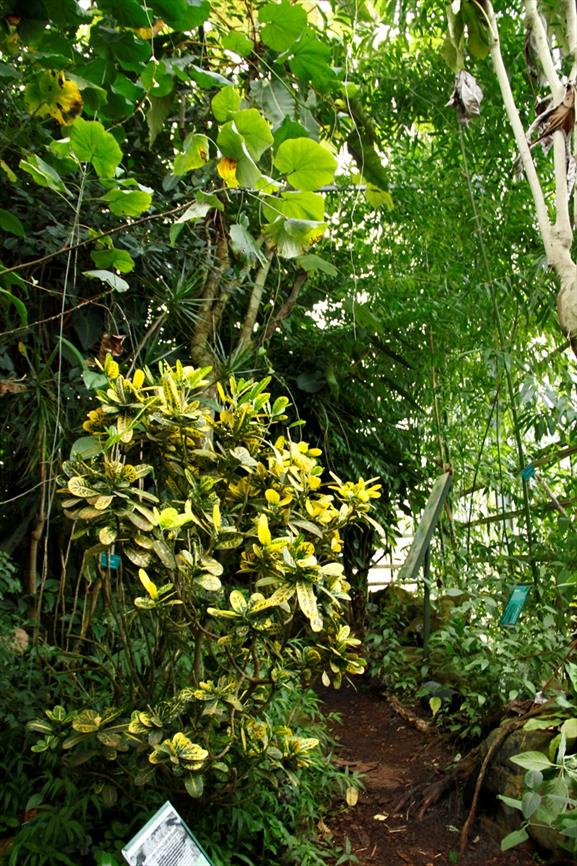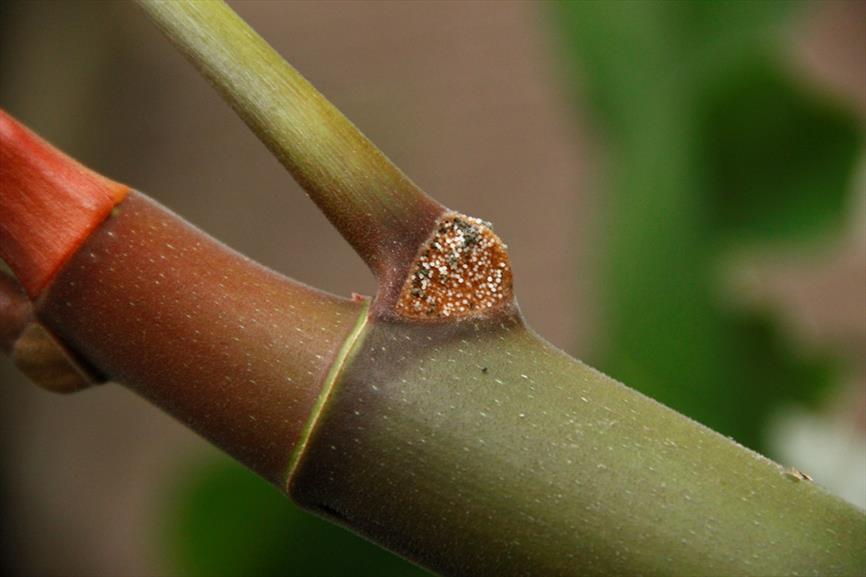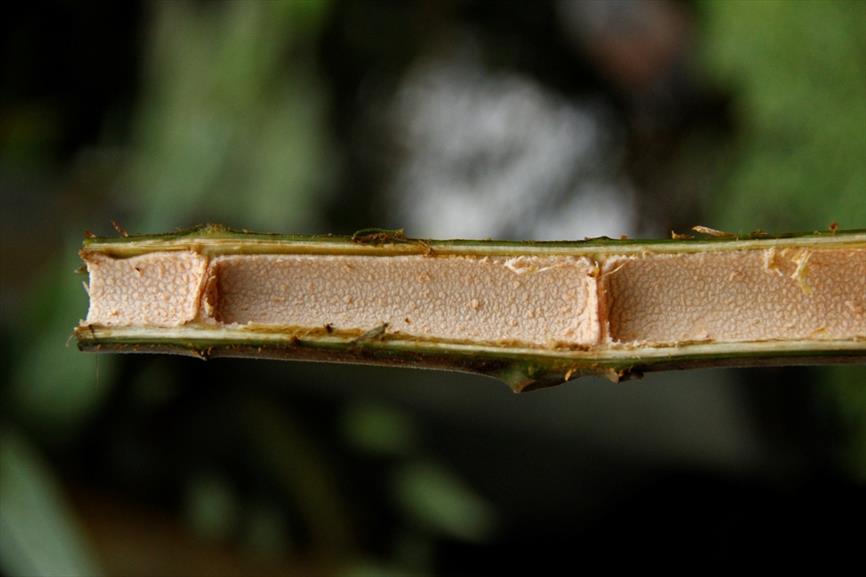Trumpet tree
Cecropia obtusa
Nettle family (Urticaceae)
Lean at your own risk
Cecropia are fast growing trees from South and Central America. When a clearing is created in the forest, as a result of fire or logging for example, they seize the opportunity to start growing and can quickly reach heights of 20 m. The stems and petioles of Cecropia obtusa, and many other Cecropia species, are hollow and excrete separate fat and carbohydrate droplets for ants through specialized glands. The ants are only too glad to harvest this nourishment in exchange for the protection the tree can offer against anything that comes too close. Moreover, they use the hollow trunk to make their nests. Therefore in South America it is strongly advised not to lean on a Cecropia when looking for support! The ants don’t even tolerate intrusive lianas - they will even bite these to bits.
Themes
Crown jewel in the Utrecht Botanic Gardens.
A compress made from the seedlings can remove skin parasites such as fly larvae. The shredded bark is also used as a compress to promote the healing of bone fractures, minimise bruising and prevent scab formation on healing wounds. An infusion of yellowing leaves is used as a diuretic. An infusion of the dried leaves is taken to alleviate back pain and to purify the blood. An infusion of green leaves is used to disinfect a woman's genitals prior to childbirth. For the skin condition vitiligo (pale white patches that appear on the skin and spread), leaves are crushed with salt and rubbed into the depigmented spots - the spots should disappear within three days.
Stinging ants live in the hollow branches and leaf petioles of Cecropia species. The trees attract the ants by producing a honey-like sap and the ants respond by working to keep the tree free of leaf eating pests including humans.
Details
| Description: | Tree, up to 20 m. |
|---|---|
| Distributions: | South america: brazil, bolivia, peru, the guianas |
| Habitat: | Rainforests, in open areas in primary forest and in secondary forest. |
| Year cycle: | Perennial (polycarpic evergreen) |
| Flower color: | Green |
| Notes on flowers: | Inflorescences, arranged in pairs, each comprising a set of green spiklets. |



